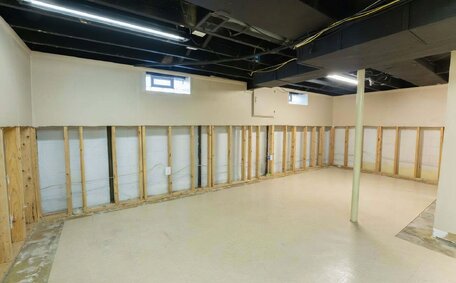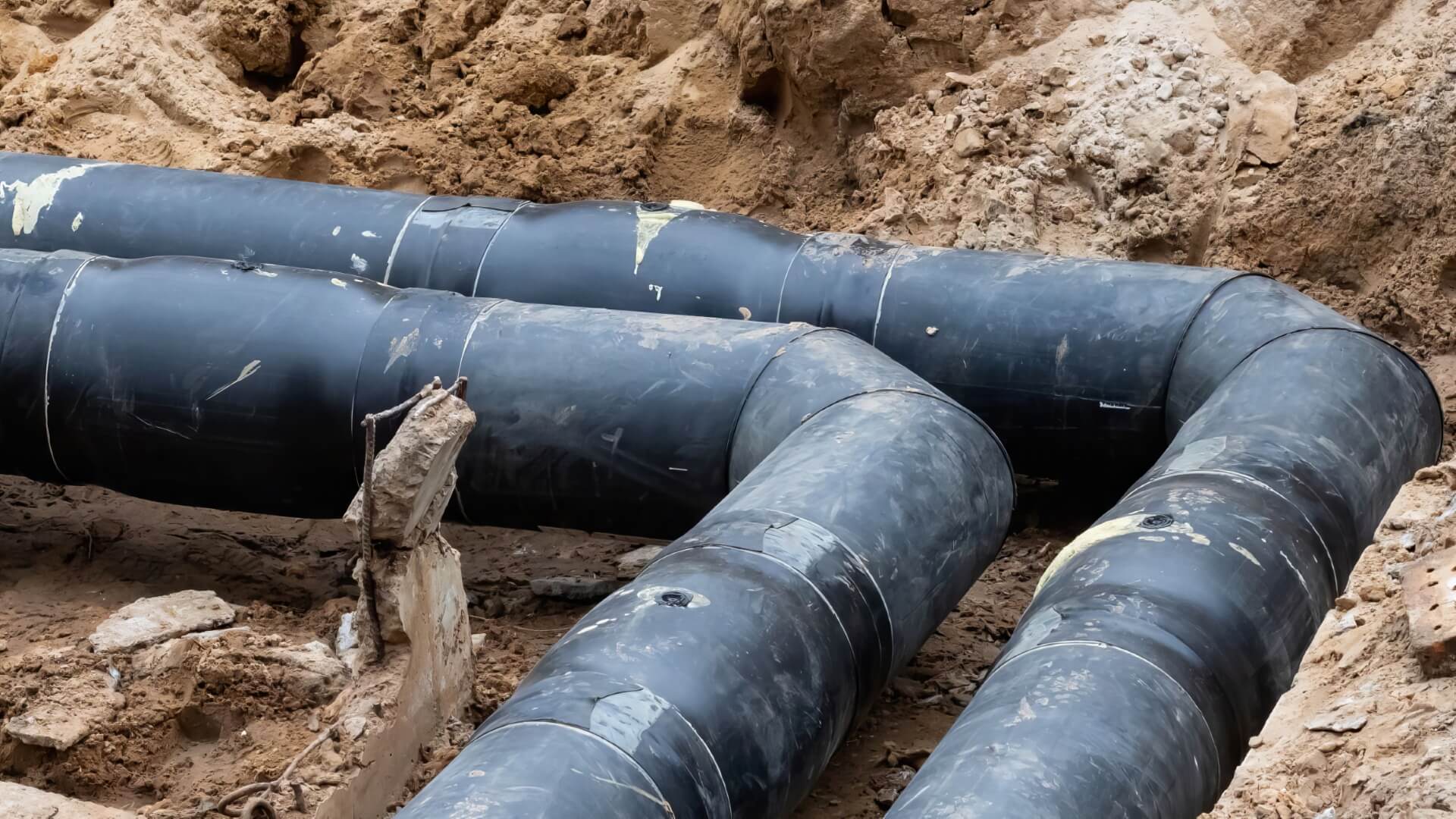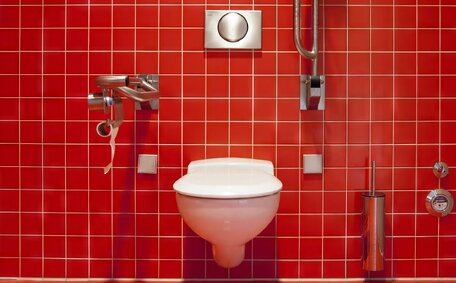Introduction to Pipe Relining
Pipe relining, an innovative plumbing technique, repairs damaged pipes without requiring excavation. It involves coating the inside of existing pipes with an epoxy resin, effectively creating a new pipe within the original structure.
When it comes to pipe relining, one common question homeowners have is whether or not pipes can be relined more than once. The good news is that pipes can often be relined multiple times. As long as the pipe is structurally sound and not severely damaged, applying additional epoxy relining is usually possible.
This method is faster, less intrusive, and preserves your landscape, making it the preferred option for many homeowners.
St Peters Plumbing offers expert sewer pipe relining services, an efficient alternative to conventional methods. In this article, we’ll take an in-depth look at relining pipes more than once and address common questions homeowners have about the process.
Understanding Pipe Materials and Integrity
Pipe relining can be applied to various pipe materials as an alternative to traditional replacement, including:
- Copper pipes - Often used for water lines, Copper pipes may develop pinhole leaks due to corrosion over time. Our pipe relining solutions offer a trenchless repair.
- Cast iron pipes - Cast iron plumbing was very common in older homes but is prone to rust and scale buildup. Relining can restore flow.
- Asbestos cement pipes - Asbestos pipes, though no longer installed due to health risks, can still be repaired by relining.
- PVC/Plastic pipes - PVC, common in contemporary plumbing systems, is frequently chosen for its longevity, a key factor in the relining vs replacement debate. If structurally sound, damaged sections of PVC pipe can often be relined.
The feasibility of relining pipes largely depends on the condition and structural integrity of the current pipe configuration.
Relining involves inserting a felt liner and seamlessly applying an epoxy coating to the pipe’s interior, effectively creating a new pipe. If the original maintains its shape without collapses or severe damage, relining is possible.
The Pipe Relining Process
Pipe relining processes efficiently repair pipes under your property without major excavation. Here is a concise summary of the essential steps in the relining work:
- Site Inspection - Initially, a thorough camera inspection of the pipe interior is conducted using a CCTV drain camera to determine if relining is suitable and to identify areas requiring repair.
- Cleaning the Pipes - High-pressure water jets efficiently clear blockages, preparing the interior for the relining process. A thorough clean up wipes out damaging tree roots, as well as any detritus or mineral deposits causing a blocked drain.
- Bypass Flow Set Up - This trenchless method allows for repairs in your sewer line with minimal upheaval, as flows are redirected during the process.
- Epoxy Coating - The pipe lining process involves injecting a custom-formulated epoxy resin mixture into the pipeline using innovative bladder devices. The epoxy is then used to seal cracks and fill holes, creating a barrier inside the existing pipe.
- Curing & Finishing - Once injected, the epoxy is left to fully cure and harden, forming a smooth protective barrier. The ends are trimmed for a clean finish.
The minimally invasive pipe repair method, the pipe relining process, causes less disruption compared to having to dig up your yard to replace an entire pipe. Trenchless technology enables pipe restoration often within a day, protecting your landscape. And in contrast to full pipe replacement, only partial segments of wrecked pipes require relining, which one may wonder, how does this method compare versus replacement.
At St Peters Plumbing, Our team are experienced in ensuring there’s no questioning the reliability of the relined pipe under properties across St Peters and Sydney. Our Sydney pipe relining specialists ensure that pipes maintaining structural soundness can be relined multiple times if necessary. For personalised advice and a quote, contact our local plumbing professionals.
The Durability and Longevity of Relined Pipes
With the no dig approach of pipe relining, Given the existing pipe’s structural integrity, relined pipes can last up to 50 years – that’s incredibly long-lasting durability. The smooth epoxy coating used in pipe relining is stronger than standard pipe materials, enhancing flow and longevity, thus preventing future buildup and blockages.
Backed by solid guarantees, Pipe relining is known for its durability, with many firms offering warranties of at least 50 years. This highlights the confidence in the longevity of properly relined pipes. As long as the original pipe is not crushed or collapsed, pipes can often be relined multiple times as issues arise.
Amid CCTV assessments, our licensed plumbers meticulously evaluate pipes to make sure they are appropriate for relining.
Relined pipes often outlast their expected lifespans thanks to their improved flow and resistance to rust and corrosion. In many cases, they can function at optimal levels for more than 50 years before needing repairs again. Pipe relining companies like St Peters Plumbing provide a long-term trenchless solution for homeowners wanting to avoid expensive and disruptive pipe replacement projects.
At St Peters Plumbing, our expertise in pipe relining strengthens and extends the life of your plumbing system. Contact us today for professional assessments and advice about relining your pipes.
When Multiple Relinings May Be Needed
Over time, some situations may require pipes to undergo relining more than once. As pipes age and endure ongoing wear and tear, additional minor repairs or sections of damage can occur. When multiple relinings are necessary and structural integrity persists, the process is typically feasible given an access point is available.
Our licensed plumbers employ a comprehensive approach when assessing the feasibility of additional pipe relining. We thoroughly inspect the entire pipe system using CCTV cameras to identify potential weak spots and assess overall condition. Key factors we analyse include:
- The pipe’s age, material and prior repairs
- Locations and severity of any new damage
- Expected ongoing use and pressure on the pipes
In general, there is no set limit on how many times old pipes can be relined. Traditional pipe repair techniques may point out that older pipes have thinner walls, so extensive repairs eventually weaken their structural stability. The pipe relining technique demonstrates that plastic pipes can often withstand multiple applications over many decades.
We also must consider accessibility if multiple relines are needed down the road. Areas that lack proper access points for our equipment may not be great candidates if ongoing maintenance is expected. Proper planning ensures access for any potential future repairs.
At St Peters Plumbing, we take pride in durable repairs designed to last. Get in touch if you have any concerns about relining pipes multiple times. Our licensed professionals can analyse your pipes and offer sincere advice on the optimal way for your pipe relining work.
Comparing Relining and Replacement
When it comes to pipe damage, homeowners often deliberate between the relining vs full replacement options. Here is an overview of the key differences between the two methods:
Pipe Relining
- Less invasive - Requires no digging and trenching
- Much faster repairs - Usually a one day process
- Lower costs - Approximately 30-50% cheaper than replacement
- Flexible - Allows for multiple repairs over time
- Advanced epoxy barriers prevent future rust and leaks
Pipe Replacement
- Entails excavation - Damages landscaping
- Extensive projects - Take over a week typically
- Higher expenses - Requires new pipe materials
- Permanent - Difficult to replace again if needed
- Puts strain on other old pipe sections
In summary, relining proves more cost-effective than replacement, as it enables repairs for a fraction of replacement costs, with quicker turnaround times and almost no property disruption. It offers a reliable long-term solution, allowing for multiple relines over time if needed. Contact St Peters Plumbing to explore your options.
Assessing When Relining or Replacement is Best
For residents in St Peters, making the choice between relining or opting for full replacement in drain repairs can be a tough decision. There are several key factors our expert plumbers consider when assessing which option may be best:
Pipe Material and Age
The type and age of existing pipes plays a role. For example, newer PVC pipes may be better candidates for relining as they likely have many more years of functional life left if properly repaired. However, severely corroded 50 year old metal pipes at the end of their lifespan may benefit more from full replacement.
Extent and Location of Damage
To pinpoint damage with precision, we deploy CCTV technology for an in-depth investigation of the drain pipe network. Minor leaks or corrosion affecting small sections can often be addressed via relining. However, severely blocked pipes with collapsed sections or extensive damage may require complete replacement.
Environmental Factors
The St Peters region’s soils, water table levels, and root penetration risk can impact long term pipe effectiveness if not properly handled. We consider these conditions when recommending repair solutions to ensure optimal results.
Accessibility for Future Work
Relining becomes especially beneficial when it comes to complications like tree roots obstructing access beneath structures, as it avoids the need for significant excavation. But replacement may make sense if the pipes are easily accessible, pondering the relining vs replacement debate, allowing for easier access down the road.
Ultimately, our licenced St Peters plumbers take a consultative approach - assessing your individualised scenario and transparently explaining our recommendation, aiding your decision to reline or opt for a full replacement. Contact us today to learn more and schedule an on-site evaluation.
Environmental and Cost Considerations
Pipe relining offers notable environmental benefits compared to full pipe replacement. By preserving existing pipes instead of ripping them out, relining significantly reduces landfill waste and environmental impact.
Relining conserves water by allowing swift repairs, avoiding lengthy shutdowns required for replacement projects. Furthermore, confining repairs within pipes averts the leakage of contaminants into soil.
Relining, while comparable in initial expense to replacement, is often more cost-effective over time, with relined pipes lasting 50+ years. This strategy can also avoid recurring replacement costs down the road.
The cost of pipe relining varies from approximately $80 to $250 per linear meter, depending on pipe size and accessibility. With even a modest 20 metre sewer line, relining saves $1,400+ in initial costs.
In cost comparison, replacement typically ranges from $150 to $400 per metre. Over the long term, these savings can be substantial.
At St Peters Plumbing, we strive to provide environmentally responsible recommendations that also fit our clients’ budgets. Pipe relining enables us to achieve both objectives. Contact us to learn more about the green, frugal option for repairing your pipes.
Common Questions and Concerns
Homeowners often have many questions about the pipe relining process. Here are some of the most frequently asked questions we receive:
How Long Does Pipe Relining Take?
Sometimes, for all-encompassing drain relining solutions, we may need to arrange follow-ups.
After inspecting pipes with a CCTV camera, we clean, prepare and reline pipes in a single appointment.
Is Pipe Relining an Effective Repair Method?
Absolutely. With proper maintenance, relined pipes can remain functional for over 50 years.
Can You Reline Pipes Under Floors and Foundations?
Yes, pipe relining incorporates trenchless pipe repair technology allowing us to reline pipes running under slabs and structures without demolition. Our equipment and flexible epoxy resins easily navigate tight bends and junctions.
How Do You Know if My Pipes Can Be Relined?
Our licensed plumbers use CCTV cameras to conduct thorough inspections of pipe interiors, ensuring no detail is overlooked. As long as pipes maintain their basic tubular shape without collapses, gaps or severe corrosion, they are usually good candidates for relining.
Pondering what pipe relining entails exactly? Reach out to the team at St Peters Plumbing. We are here to ensure you know what options you have to address your pipe relining concerns.
Conclusion and Next Steps
In summary, pipe relining provides an efficient, minimally invasive option for repairing damaged plumbing without full pipe replacement. As we have covered, existing pipes can often be relined multiple times as long as their structural integrity remains intact.
Relining evades the requirement for considerable groundwork and exemplifies that to repair pipes can be more prompt and cost-effective than replacements as time passes. The durable epoxy barriers also deliver reliable protection against future leaks, corrosion and blockages.
Homeowners grappling with issues such as a broken pipe should view pipe relining as a feasible restoration strategy. We encourage St Peters and Sydney residents to contact St Peters Plumbing for a detailed discussion to determine whether relining or replacement suits their specific situation.
You can call us at 1300 349 338 or email jobs@stpetersplumbingservices.com.au to speak with our licenced experts. You can get free consultations and appraisals, in addition to pipe inspections to evaluate if your pipes are suitable for relining. Get in touch today to explore this trenchless solution for restoring your plumbing.






